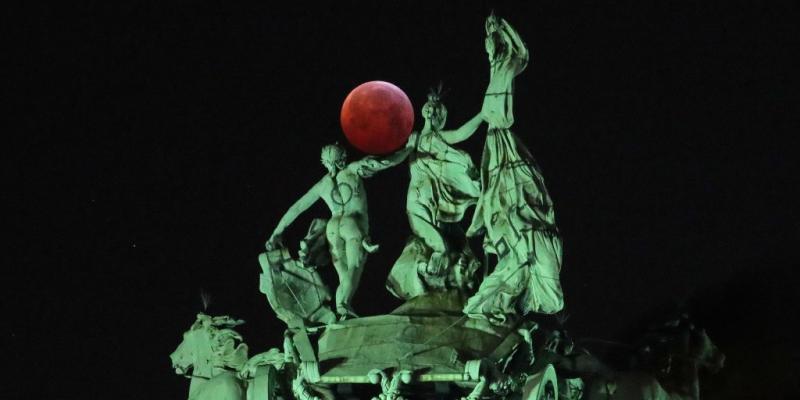'Super flower blood moon' is coming this week



Skywatchers are in for a treat this week when a full moon, a supermoon and a total lunar eclipse occur on the same day — a rare lunar trifecta, according to NASA.
The celestial spectacle will take place before dawn Wednesday, when the biggest and brightest full moon of the year turns rusty red as it slips completely into Earth's shadow.
Weather permitting, the total lunar eclipse will be visible across the Western United States, western Canada, Mexico, much of Central America, parts of South America and Asia along the Pacific Rim.
"Folks in Hawaii and the Aleutian Islands will get to see the entirety of this eclipse — it will be quite a show for them," Bill Cooke, who leads NASA's Meteoroid Environments Office in Huntsville, Alabama, said in a statement.
The eclipse coincides with a "supermoon," a full moon at its closest point to Earth in its elliptical orbit. The May full moon is sometimes known as the "flower moon" in traditional folklore because it's typically at a time of year when spring flowers emerge.
And because lunar eclipses are sometimes called "blood moons" as the moon darkens and turns a dull red when it passes into Earth's shadow, this week's skywatching event is being called a "super flower blood moon."
The total lunar eclipse will be the first to occur with a supermoon in nearly six years, according to NASA. The next time a total lunar eclipse will be visible in the U.S. will be May 16, 2022.
Lunar eclipses occur when Earth moves between the sun and the moon, blocking sunlight from falling onto the lunar surface. The eclipse will begin Wednesday at 4:46 a.m. ET.
When it slips completely into Earth's shadow, the moon will appear red, known as totality, from 7:11 to 7:26 a.m. ET.
Unlike with a solar eclipse, skywatchers don't need any special equipment to safely view the celestial show. And for those in places where the eclipse won't be visible, it will still possible to catch the action live online.
The European Space Agency and Australia's Commonwealth Scientific and Industrial Research Organization will host a livestream on ESA Web TV. The Virtual Telescope Project, which is based in Italy and partners with robotic telescopes around the world, will also broadcast the event on its website.

